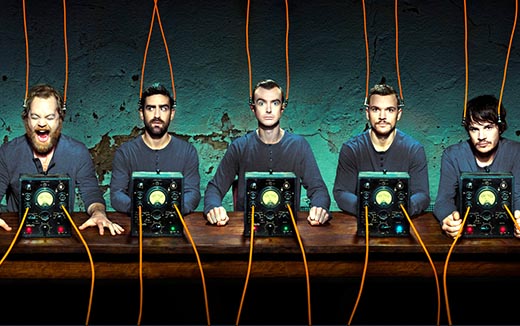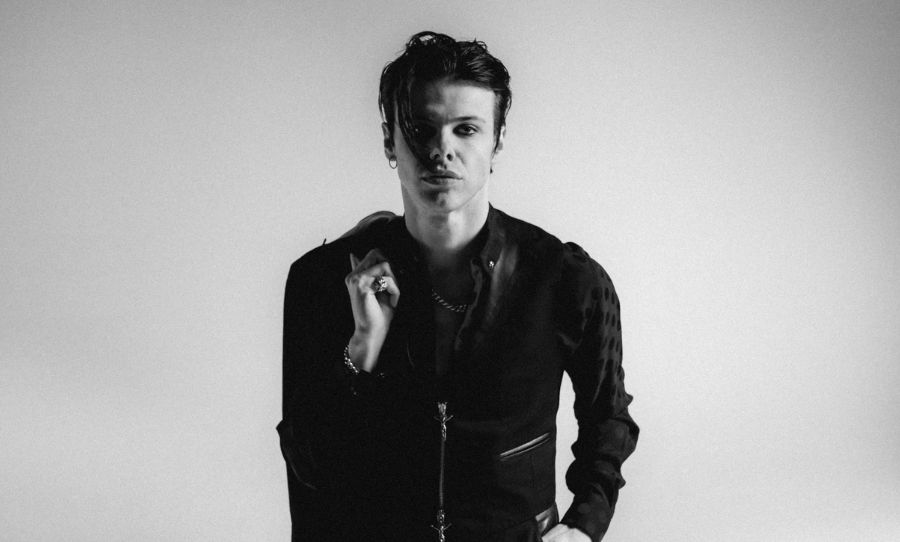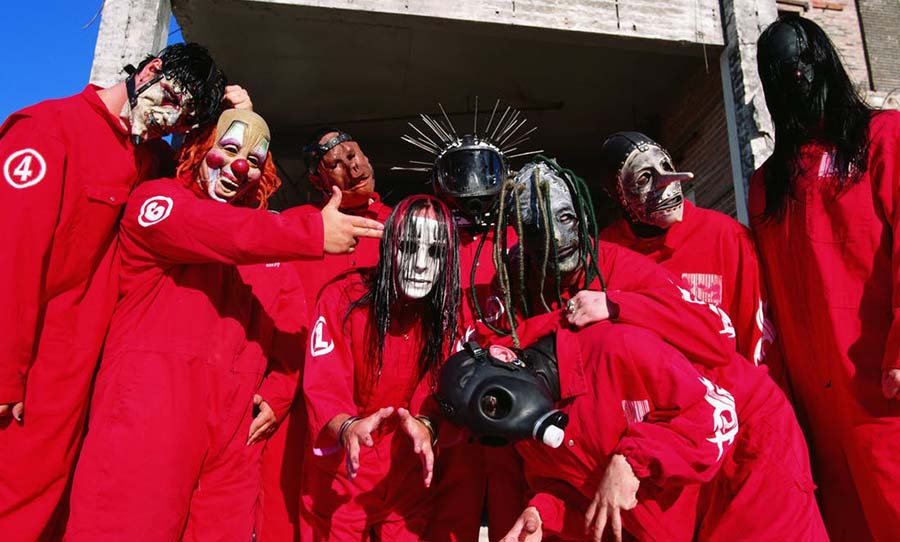There’s a reason why the Olympics and the various World Cups are quadrennial – it’s almost the perfect short length of time, long enough for you to forget all except only the slightest details. “Oh yeah, that Shabalalala bloke for South Africa scored that cracker of a goal in the opening game” was actually something I remembered the other day.
With music though, it doesn’t really work. Karnivool has, in the 10 years since they released their debut Themata, only released two other albums – Sound Awake in 2009, and Asymmetry in 2013. The band has said in many interviews that they recognise that four years is too long, with guitarist Mark Hosking saying “It’s usually the first thing we say, ‘We’ll try to do this one quicker’”. Other guitarist Drew Goddard also mentioned that the length between albums is unfortunate “because we lose some fans”. To be fair though, the band’s album cycle is restricted by singer Ian Kenny’s involvement with Birds of Tokyo.
Karnivool have been a staple of the Aussie heavy scene for over a decade, and the seeds of their greatness was sowed in 2005’s debut Themata.
As I said before though, Themata is going to be 10 years old now. That’s a good reason for the band to do a special tour, but more importantly, it’s a chance to jump on the nostalgia bandwagon. (Except it’s not really a nostalgia trip for me, re-listening to Themata. Before this assignment, I hadn’t really listened to the album in the first place, as Karnivool and myself have a had a difficult relationship. Well, it’s mainly been me with the issues. Long story short though, we’re good now)
First of all, a bit of context. The metal world, if there is such a thing and if I can call it that, was a very strange place when Themata came out. After wave after wave of solid metal genres coming and going, at the turn of the millenium the scene was filled by the Swedish Chef-esque vocals of alternative metal and grunge on one end, and the unpolishable turd composed of chugga-chugga, dreadlocks and rap that was nu-metal on the other end. It wasn’t a very happy time for metalheads, but in the mid-2000s most agree that it was all saved by the emergence of a slew of American bands like Lamb of God, Mastodon, Killswitch Engage and Isis.
So in terms of nostalgia and all that, the first thing I noticed is that Themata is the thick nu-metal and alternative metal influences that have all but disappeared from the metal mainstream. In some places, these genres have right of way, such as in the middle track Lifelike (stylised as ‘L1FEL1KE’). Lifelike is interesting – it showcases the big nu-metal tropes. As well as overly chugging groove that characterises ever nu-metal song that ever was, it also contains Kenny’s best attempts at rapping, as well as passive-aggressive whispering (think Korn, Drowning Pool), two other well known nu-metal essential ingredients. Lifelike was the band’s first single, being released two years before Themata, in 2003. In that light, it’s fair to say that it existed in the creative cauldron of a band’s early years. The song is as nu-metal as the band became in all of their full-lengths released.
Now that we that corner of this album’s genre-map pinned, we can examine the other. Over the years, Karnivool has undoubtedly been massively compared to Tool. That American band shot out of the 90s, trailblazing a very individual path with their synthesis of progressive, alternative and art rock/metal elements that they could be considered worthy opponents of Radiohead if there ever was some sort of gladiatorial fight-off for title of ‘most influential 90s/00s band’.
What I’m trying to say is, it’s unfair to compare them to Tool. But on the other hand, well, the comparisons really do invite themselves. Everyone I’ve ever talked to about Karnivool has acknowledged it, and the band no doubt had to put up with a lot of comparing in their early days. And it’s probably all down to one song too – Roquefort. Oddly, the song wasn’t released as one of the album’s singles, but it’s so far and beyond the album’s brightest light (along with Shutterspeed). Roquefort features a dominating, groovy, common time-bending riff that has a kick of funk to it, and an incredibly catchy hook. It manages to stew together a slew of sub-genres together into a proggy hard rock melody suitable for radio, in very much the same manner as much of Tool’s output.
Another part of Themata’s genre-map to be explored is the cow corner of extreme metal. The extreme metal influences hardly dictate this record or any late Karnivool work, but they do pop up rather strongly in two songs, Shutterspeed and Scarabs. (Interestingly, Karnivool began life as a cover band covering English grindcore pioneers Carcass). Shutterspeed, one of the singles released for the album, is powered by a Mach-speed riff that moves faster than your thoughts, like a typical Christopher Nolan script. The groove-metal rhythm and odd time-signature movements that underpin this song make the notion of bars of music seem silly.
Then there’s Scarabs. Whereas Shutterspeed has a huge hook and somehow has melody to it, Scarabs seems like a cut from some early time in the band’s life. It shares all the basic ingredients with Shutterspeed, but is a full-on exercise in frustration that at the end of its two- minute length, is a chaos of instrumentation. The above songs obviously take vast inspiration from Swedish band Meshuggah’s singular avant-garde, polyrhythmic blend of thrash metal, death metal, progressive metal, and jazz fusion. There’s not much of Meshuggah in Karnivool’s music to date, save for these two songs, but the band do cite them as an important influence. It’s hard not to, though, and that goes for Tool as well – both these metal bands produce such an unparalleled sound that they transform paradigms. Interestingly, both Tool and Meshuggah burst onto the scene in the mid-90s, with Ænima (1996), and Destroy Erase Improve (1995), respectively, being the band’s breakout albums. People like to say Australia’s a decade behind the times – and Themata came out in 2005.
There’s a few other songs on this album, besides those ones. There’s Sewn and Silent, which is an acoustic do, and there’s also Mauseum, which has some funk tempo going for it, but, you know, I don’t want to make this a recount. But there’s just one last song I want to talk about. As I’ve discussed, and as you’ve hopefully followed, Themata was a cauldron of all these 90s and 00s metal trends all thrown into one. Karnivool managed to do a pretty job fashioning them into a coherent piece, which is what Themata is. It goes in all different directions, but there’s a solid spine from where it never wavers and from whence Karnivool’s career blossomed. But by the time Themata had come out all of these trends that fed into it, had died out. Nu metal was basically dead at this time, the magnum opus of alternative metal, System of a Down’s Toxicity, had been out for about five years, and as I just mentioned, Tool’s and Meshuggah’s own trailblazes were getting old as well.
This last part of Themata that we stray into is hidden, all tucked away down there, in the last song, Change (Part 1). Of course, in hindsight, Themata is a sore thumb in Karnivool’s repertoire, as it is in the company of their established repertoire of progressive rock and metal. The song is an ambient, wandering piece, with faint vocals slightly heard – something about a “glass smashing against a wall”. You could say it sounds like a run-of-the-mill closing track. It also sounds like nothing else on the album. There’s no chugga chugga, or melody, or chaos. It sounds like something they’d play at the Crystal Castle.
What’s the deal with the “(Part 1)” though? Well at the end of recording they’d written this huge song that unfortunately they could only record the first few minutes of. And, along with it being the last song written, it was called Change in hope that that’s what the band believed their future direction would be. The “Part 2” that the title infers takes place also as the closing track on Sound Awake, and as a solid progressive metal song stitched together of varying parts, fully completes their original prophetic vision. You’d already have experienced that vision though, having listened to the preceding hour of Sound Awake’s orgasmic progressive lures.
Only two albums ago was Themata, and in comparison Sound Awake and Asymmetry sound like something from the moon. Unfortunately though, that’s what happens when those albums are four years apart, the musical adventure gets weakened or lost, and all the pent-up steam dissipates. I don’t know how to say it diplomatically boys, but hurry the fuck up and write a new album.
FIND OUT MORE ON




